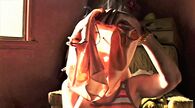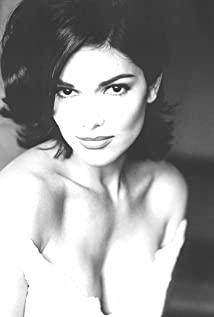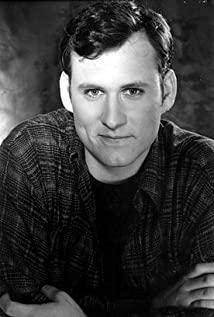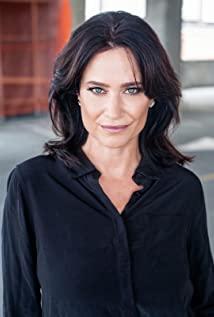However, compared with the postmodern position of dissolving textual meaning, David Lynch is not advanced enough. In fact, he is traditional, yes, his puzzles can be solved quite well (may not be the only and may not be "conclusive"), even though the narrative of Inland Empire is so messy on the surface. But for the audience, this is probably also a kind of fun.
I think the key to understanding the plot of this film lies in "Mulholland Road" and "Twin Peaks: Walking with Fire" (movie version). After watching it, I will quickly grasp what routine to start with to watch this film. David Lynch is what I call the kind of cute paranoia who often shoots the same story in different ways. After all, these three movies are stories of a tragic woman seeking peace of mind.
The narrative of Twin Peaks: Fire Walk With Me is relatively smooth. It is mainly combined with the TV version to complete the setting of the spiritual world of The White Lodge/The Black Lodge. The most beautiful visual effect in the movie), its core is actually a very classic "saints saved" story-how Laura Palmer, a tortured girl, swayed and struggled between depravity and innocence (sometimes it almost reminds me The last temptation of Christ = =), and finally left a scarred body, leaving an innocent soul, and was taken by an angel to The White Lodge, which is almost equal to heaven. The inspiration for "Inland Empire" lies not only in the theme of the salvation of the girl’s soul, but also in a "rescue operation". In Twin Peaks, Dale Cooper, who can communicate with Laura in the "red room", acted as her rescue. The role of the protector and guardian, to discover the truth about her. I tried to apply this structure to the interpretation of "Inland Empire" and it was very useful. There is also the role of the incarnation of the dark side of the heart. The guidance of Cooper at the end of the "murderer" also appeared in "Inland Empire".
The actual prompts given by "Mulholland Road" are even greater, such as the fact that you must pay attention to the beginning of the truth, such as the idea of "traveling in the brain" and so on.
Super long! Complete! Enter carefully without seeing it.
Suppose the heroine is a Polish woman, or it may be a Polish woman who immigrated to the United States. She is the subtitled "Woman in Trouble". The black-and-white scene at the beginning shows the Polish woman and the strange man have an affair, and the protagonist's face is blurred. The picture turns to color, and we see all kinds of mental pressure make her lock herself in troubles. The inner self of the Polish girl appears as a crying beautiful girl, and the character's name is Lost Girl. She couldn't get out of hotel room No. 205, where the affair was located. What kind of pain did Polish women suffer, and how did they go through psychological struggles to get relief? This is the full content of the film.
Everything that was shown on the TV that the crying girl watched showed her inner struggle. She built several barriers for the crying girl deep in her heart. The doors that can pass through the barriers are often marked with AXxoNN. But I don’t understand how this mark is connected to the radio drama of the same name played on vinyl at the beginning of the film.
1) The closest thing to the crying girl who can directly connect to the hotel room 205 is the Bunnyman melodrama in Room 47 (I think this is a TV show that the girl is actually watching, but what we see has passed through the girl’s consciousness. Distortion). The luxurious room next door that the male rabbit entered is also a place very close to me. A Polish-speaking gangster and a character named Phantom (phantom) emerge in this room. They represent the fear in the heart of a Polish woman (the former may represent the pressure brought by life to her, and the latter is the negativeness of her heart), looking for an outlet Increase pain for Polish women.
Side note: The Bunnyman sitcom was originally an absurd short film made by Lynch for his website, a bit like the world of three people after death in Sartre's play "Confinement" ("Others are hell"). In this film, 47 is a symbol of ominousness and death. The bunny people repeatedly mentioned time, who is coming, is coming soon, etc., all suggesting that they are waiting for a breakthrough to enter.
2) The layer outside the rabbit sitcom is the life of American actress Nikki Grace. The Polish girl rescued the crying girl with the help of Nikki, a personality that kept moving forward even if she was upset. Of course, Nikki's personality has to gradually realize this mission, and the messenger who "predicts" this mission to her is the weird old woman who visits her home.
Side note: The fable said by the old woman: "The little boy opened the door to see the world. When he walked out the door, his reflection gave birth to evil, and evil came to the world." On the one hand, it may refer to the birth of Phantom before entering the world, and it is also very similar to Twin Peaks. Variant about The Black Lodge in. Black Lodge is the only way to The White Lodge, a symbol of paradise. Everyone’s "pure malicious shadow me" is a kind of double body. If those who enter Black Lodge are not pure and strong, they will be "shadow me". "Instead of returning to the world, the true self is trapped in Black Lodge.
3) A layer outside of Nikki's acting life is the story world of the American movie High On the Blue Tommorows that she plays. She plays the heroine Sue, and the male star Devan plays the actor Billy. At the same time, the Polish woman set this American movie as a remake. The old version is the legendary Polish movie "Forty Seven" that was cursed and could not be finished. I think that Polish women project their own failed lives more directly into "Forty Seven", hoping that the new American version can break through past tragedies.
I noticed that Sue in the movie world used to connect to the Bunnyman melodrama by phone, but the two parties were unable to communicate, which shows that Sue cannot act across layers.
In short: To save the crying girl, Sue must break through the movie world and become Nikki together. Nikki must realize that his rescue mission successfully completes the film, and then break through the rabbit melodrama and face the crying girl directly. At the beginning, there were several latitudes with clear boundaries. When the Polish woman mixed Sue and Nikki in her consciousness, Nikki could experience the troubles and ups and downs of the Polish woman through the plot in the American film in the name of Sue. Overcome these pains and reach the depths of my heart surrounded by fear.
================================================== ================
The narrative dimension of this film is more than 40 minutes before it is very clear that Nikki made the film. The movie High On the Blue Tommorows is a way to show the hostess’s troubles and confusion mental trajectory. It may also be more avant-garde. I summarize the general plot as follows:
The heroine Sue is the maid of the rich Billy's family. She is married and lives in the simple simthy bungalow No. 1358 (Polish women probably set her home as the character's home). Sue's husband is suspiciously ill and violent, speaks Polish, and wanders to Eastern Europe with a circus. Sue develops an extramarital affair under the pursuit of Billy, is pregnant with a wild species and is found out by her husband and aborts. It was discovered that Billy was just a playboy, and there were countless women who had soaked up (they appeared in Sue's house and took her to see the streets of prostitution). She is becoming more and more decadent and violent, and may have injured or killed her husband. When she rushed into Billy's luxurious apartment and confessed her love and prayed for salvation in front of his wife and children, Billy refused. Sue lives on the street like a prostitute. Billy's wife resents her husband for going out of the wall and assassinates Sue on the street. Under the kind guidance of a homeless woman, Sue walked towards the death peacefully.
In the "Filming" part, the only scene where a gangster entered was a black-haired woman complaining at the police station, saying that she was hypnotized to kill. At the end of the movie, we discover that the black-haired woman is Billy’s wife. From the fact that she was wearing the clothes that killed her when she surrendered and the screwdriver was inserted into her waist, I guess that the previous police scene was an early murder. Ending: Billy's wife is in a trance and still doesn't understand that she has killed someone.
It's easy to tell the inside and outside of Devon's play. He speaks with a southern accent when he plays Billy. Between filming, Nikki praised him for "That's we need." It may mean that Devon spoke with an accent when he passed coffee between filming, "What I want is this kind of state of being in the film."
The dimension of "Nikki making a movie" has completely transferred to the plot of the movie High On the Blue Tommorows from a certain point in time. This is the moment-Sue and Billy have sex for the first time in their bungalow. From then on, the character Sue and the actor Nikki became one in the consciousness of a Polish woman. From then on, the content of Laura Dern, until the director called to close, was basically the plot of the movie High On the Blue Tommorows.
However, Nikki, who was accustomed to the "false self-subject" before, did not know that he had been "put into" the movie by the Polish female, thinking that he was having an affair with the male actor. The movie character Billy certainly doesn't understand what the actors Grace and Devon are, so she doesn't understand what she said. She carefully recalled yesterday’s strange events and realized that the scene of "returning from shopping in the owner's cart" was already Sue's "in the film" (Nikki took the staff's car to the outside of the studio and could not drive himself). The character Sue in the green dress walks into the door marked AXxoNN, her face changes from defocused to clear in front of the camera (does it mean that Sue is beginning to realize that she is a "character" played by the female star Nikki, indicating that Nikki will also be in the future Will she realize that she is a "character" in the heart of a Polish woman?), she saw the cast and crew on the set a few days ago, but thought that the other party was a role in the movie. She called Billy, and the other party was the actor Devon, but could not enter her place. "Cinema World".
================================================== ==================== The
next plot, until the end of work, is the most confusing. The American version of the movie, the Polish version of the movie "Four Seven", the psychological symbols and the possible real experiences of Polish women are skewered. But the central content is only the same: the opening remarks of the husband Sue when he confessed to the detective clarified this point: There is a man I knew in the past, and his name does not matter. People always reveal something, layer after layer. It can be seen that Nikki/Sue has gradually realized that the person she can't let go of is her husband (the husband in all dimensions is played by Peter J. Lucas). She finally said that I don't care about tomorrow, I just hope to be clear about the past.
Polish women’s guilt consciousness and uneasy anger uncontrollably appeared in American movies, "April 7" and even Nikki’s life—Nikki’s husband was cold and alert; some Polish husbands were painful and dignified; Sue’s husband was rude and rude. At that time it seemed very pitiful and innocent. The old woman who visited Nikki and the woman who visited Sue emphasized in two dimensions: "action brings consequences" and "you have a debt to pay".
Does this debt repayment mean that Nikki=Sue is responsible for helping the crying girl get relief, or does it mean something else?
In my opinion, the Polish part basically projects the real experience of Polish women most directly, and this is divided into two parts. Although I can't tell which "actually happened" one by one at the moment, I don't think Lynch has given enough conclusive clues. The following are just my guesses.
First, in the Polish dialogue part of the Eastern European city in the winter night, the character wears a coat, and the young woman and the crying girl in this part are both played by Karolina Gruszka. Sue's prostitutes and girlfriends once brought her into this street. Sue was very scared at the time. After watching this episode, you won't be surprised by her instinctive reaction. If you regard this part as the movie "Four Seven", then the general plot is: the young woman's husband once had an affair with a black long-haired woman, but has turned around. He may not have a very good personality, but it's not that he doesn't love her. The young woman killed the object out of the wall with a screwdriver. The husband died on the stairs, not knowing whether she was pushed down by mistake or deliberately revenge. (On the return journey, you will find "Phantom", "Phantom" sees through her crime). Later, she lived on the streets with prostitutes.
This part seems to express the most guilt of Polish women. Her husband has a sad expression and looks very gentleman. All the fault lies with her. Before committing the crime, the young woman quarreled with "Phantom", and "Phantom" clamored to push her into hell and beat her. It looks very much like the horror coexistence of the evil elf BOB and the victim Laura in Twin Peaks, the same hoarse screams and the dazzling visual effects of the rapid alternation of darkness and strong light, so I think this paragraph is probably just a kind of "psychological struggle". The inner forces that manifest evil have the upper hand.
I saw the crying girl in the scene where the young woman's husband turned down her lover on TV, and her mood suddenly became entangled. A hellish red color appeared in the bunny man's room, and the figure of a bunny man emerged. After the Bunny took his seat, he turned into a detective who listened to Sue's confession in the American movie. There is a striking A on the wall behind him, indicating that this place is also a kind of "passageway"? ) The detective’s attitude was cold and seemed to know everything. This seemed to symbolize the Polish woman’s desire to talk to her husband without reservation. When Sue talked about everything, her eyes were angry and the words were rude, which shows that the Polish woman is about marriage. It feels complicated.
Second, the Chinese elegant husband in "Four Seven" may not necessarily be his true face, but may be the beautification of Polish women out of guilt. Combining with the violent and sloppy husband in American movies, it is more like a more complete image. As Sue's husband showed his identity as a Polish immigrant, he began to speak Polish and joined the Eastern European circus. The parts of "7" are integrated, and his boss is "Phantom". Combined with some speculations in American movies, the Polish woman’s husband may be downright and imposing. The Polish woman may have also been unfaithful to her husband. She was pregnant with a wild species and was exposed and beaten by her husband. She had her baby killed. After committing the crime, the hostess gave up on the streets to prostitution before opening a house with a stranger.
The Polish woman let the American version be killed as Sue suffered the consequences of infidelity, as if it were a kind of atonement. In this version, the black-haired woman who killed Sue, Billy's wife, looks the same as the object killed by the young woman in "Forty Seven". The murder weapon was the screwdriver snatched from Sue. It is no one else who hypnotizes Billy's wife, it is the "phantom"! It can be seen that "Phantom" is really close to Twin Peaks' BOB.
================================================== ============================ In
this large paragraph, several times it is clear how the crying girl guides Nikki to save "self" :
At 73 points, the crying girl personally instructed Nikki to burn through the gauze with a cigarette butt and look through the hole. This hole is a "peephole" that bridges the gap between the American film, the Polish film "April Seven" and even the real life of Polish women. Like the marked door, it is a "passage" connecting multiple dimensions. It is worth noting that this segment is black and white like the only "reality" opening part, and the crying girl shows a clear face from the blur, much like the upside-down shot of the woman having sex in the opening movie, except for the opening. The human face is always blurred. Did Lynch make it clear this time that the crying girl and the leading girl are the same person? In short, the crying girl is equivalent to introducing Nikki a way to get closer to herself. She also reminded Nikki "You have to have a watch". Later, there was a scene where the hands of the watch were reversed, representing Nikki going back to the past, exploring the content of "Forty Seven" or the real experience of Polish women. After this rare personal statement ended, Nikki looked up and saw his face, which showed that Nikki returned to Sue's identity. They are the same "characters" in the hearts of Polish women and continue to trek in the movie world.
In addition, the first-person shot of the woman in the film waved her hand to Nikki, allowing her to walk through the red curtain scene and enter the hut where she confessed to the detective. Scenes). It can be seen that the sleeves on this arm are red, and the crying girl is wrapped in red (but without sleeves, it looks more like a sheet). Before the end, when Nikki=Sue fled into the club to avoid Billy's wife, the girl in red showed up and took her to the back door, up the stairs, and went to see the detective. She began to say the same prologue. Combined with the bruise on the corner of her mouth (this is the result of the previous beating at Billy's wife's house), we can find that Nikki=Sue's first confession also advanced the following plot.
The crying girl explicitly asked Nikki=Sue for help once, through the sauce stains on her husband's body (a metaphor for blood stains? Because the next paragraph is the crime scene in "Forty Seven"), praying "please get rid of the nightmare that occupies my heart", Occurs at 98 points. This prayer scene imitates the silent film scene that the heroine in "Sunset Boulevard" watched by herself before, and the scene is taken from the real movie "Queen Kelly", starring the actress of "Sunset Boulevard" when she was young.
================================================== ==========================
At the end of the American movie world, the Polish woman gave herself a trial for the death of Sue, and corrected the old Polish version Tragedy. But Nikki realizes that her mission has not been completed yet-she must kill the demon who made her commit evil deeds: then "Phantom", or Crimp (played by the same person) next door to Sue in the movie world. It can be said that all evil deeds have "phantoms". A female visitor who visited Sue once asked two questions, instructing Sue=Nikki to face it, one is "Do you know the person who lives in this room" refers to her husband, and the other is "Do you know the person living next door" refers to "phantom" .
The weapon to destroy the phantom is actually provided by the crying girl (well, in the final analysis, it must be self-help!). Sue’s husband was summoned by the crying girl (the old man of the Spiritual Church said: It was red, red is the key word for the crying girl) and got a pistol. The old man of the Spiritual Church instructed him to destroy his boss. phantom". He left the gun at home and was later obtained by Nikki=Sue. The old man of the Spiritual Spirit was transformed into three bunny people. It seems that they are the characters closer to the crying girl, so they can pass on the crying girl's instructions and understand the progress of the "rescue operation". He was also a detective who turned into a bunny man. Later, when he called, he said the same line as the old man in the Spiritual Society, "Bring the horse to the well", and said that "time will not be long" and "he ("Phantom") is here. Nearby" and so on.
Sure enough, shortly after the movie ended, Nikki looked for the stairs that the detective walked through, pushed open the door marked AXxoNN, and returned to the movie scene to get a pistol (I rely on it, it’s getting more and more RPG), and then the dimensions are distorted. Finally came to the door of Room 47 where the Bunnyman was. "Phantom" followed, and Nikki shot him with a gun. The opponent turned his own face, which fully demonstrated that he represented the "heart demon". After the malice was eliminated, Nikki finally passed through No. 47 and entered the hotel room No. 205. The scenes that the crying girl had been watching on TV happened in front of her at the same time, and all barriers were broken. Nikki ended the rescue operation with a kind kiss, and she was finally able to return to the stage to enjoy the cheers.
The crying girl, which is the deepest wish of the Polish woman, is to return to home 1358 to welcome her ordinary husband and a son. She wiped out the malice and anger in her heart, forgave her husband's unfaithfulness, and forgave the wild species in her belly. As for how the real "Polish woman" faces the future in reality, the film does not explain. But we know after all that she has gained peace in her heart.
===============================================
Nikki's last What does it mean to appear? I think this represents all of the above... it's just what Nikki will and hasn't experienced after the weird neighbor old lady named her "mission"! And if the filming is done smoothly as in the film, she will be able to sit on the opposite sofa and smile happily!
The end of the film is more like after the film is over, characters of all dimensions are released to make fun, including the one-legged sister of "Phantom" who has never appeared on the scene, and the woman who raised the monkey mentioned by the Japanese girl before Sue's death. The ending song turned out to be one of my favorite songs of Nina Simone-Sinnerman, a song about the salvation of sinners. Fully point out the subject.
=================================================
To How does this film despise the audience... That is the super frustrated picture, and the old face of Laura Dern that has repeatedly filled the screen! ! Oh my God is so challenging. Especially the ugly face. The only time I almost couldn't see it was when the woman who played Laura's mother in Twin Peaks appeared as the weird neighbor old lady. The ugly and exaggerated angle when she spoke was really nauseating. I don't have a sense of horror. I enjoy Lynchiu's weirdness. In short, I don't approve of Lynch's digital attempts, because a large part of my original love for him is in the picture and the picture! ! At least I think this film can be part of the film. Now that I understand the plot, I don’t want to watch it again.
Regarding the actor this time, I think Laura Dern has an unusually beautiful figure, and her acting skills are much more impressive than before. After all, she was acting in 4/5 of the time. Jeremy Irons appeared in no more than 20 minutes, and the director he played was actually a confident and optimistic comedy character, and he was also handsome in such a frustrated scene (a good figure is the advantage). Harry Dean Stanton played the director's assistant, a very embarrassing little old man. I always think that although Stanton and Uncle JI are not at the same level of handsomeness, their faces are a bit similar, so it is very subtle for Lynch to drag these two together. The team has a cool sense of humor. Peter J. Lucas, who plays the husband, is a Polish actor who developed in the United States. He has never heard of it before... But in some ways he looks like Ralph Fiennes! ! Mainly the part of the eye.
At the same time, in accordance with the previous instructions of the director played by Jeremy Irons, the scene switching in his US version of the movie should be divided into black fields with fade-in and fade-out. I don’t know if I can use this as a reminder of the "US Movies About Sue" section.
View more about Inland Empire reviews











